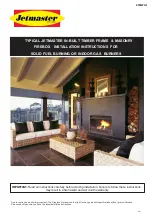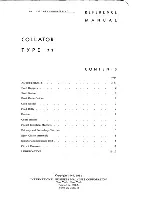
ETAS
Commissioning
CBS10x.1-2 - User’s Guide
20
3.3.2
Notes about Installing the Lambda Sensor
The following general guidelines should be taken into consideration when
installing the LSU lambda sensor:
• Select the installation location in exhaust-gas lines so that a representa
-
tive exhaust gas composition is ensured while maintaining the specified
temperature limits.
The following maximum values apply to the LSU4.9 lambda sensor:
– Maximum gas temperature: 930 °C
– Maximum hexagon temperature: 570 °C
Depending on the operating voltage, cold exhaust gas in conjunction
with high rate of flow can cause the operating temperature of the sensor
cell to fluctuate. This can lead to measurement errors.
Hot exhaust gas with temperatures above the regulated ceramic tem
-
perature can cause the operating temperature of the sensor cell to
increase. This can also lead to measurement errors.
• The active sensor ceramics is quickly heated up by the internal heater.
The installation location must be selected so that as little condensate as
possible can enter from the exhaust gas system in order to avoid
ceramic breaks.
Select the installation location and installation position of the sensor so
that the sensor is possibly installed in downward sloping exhaust-gas
pipes and exhaust-gas systems in order to avoid a concentration of con
-
densate in front of the sensor installation location (no indentations, pro
-
jections, tearing edges).
• The installation angle position should be sloped at least 10° to the hori
-
zontal (sensor tip pointing downward).
This prevents condensate from collecting between sensor housing and
sensor ceramics during operation in cold environments.
Fig. 3
-
1
Installation Angle Position
• Assembly with special grease on fixing thread (e.g. Bosch lambda sen
-
sor assembly paste, item number 1 987 123 020).
• Tightening torque: 50 Nm to 60 Nm, material properties and thread
strength must be dimensioned accordingly.
• Avoid impermissible heating of the cable gland close to the sensor.
• The use of cleaning or lubricating fluids as well as evaporating solids at
the sensor plug connection is not allowed.
















































